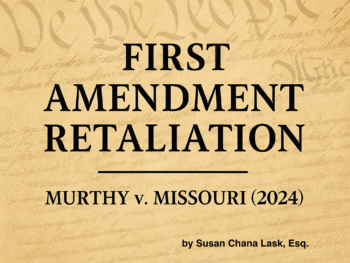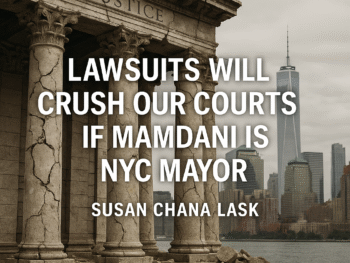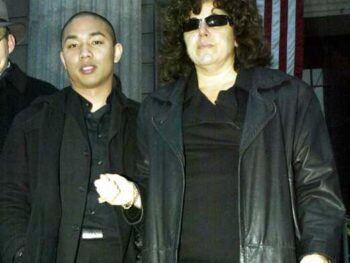If you spent years branding your name without filing for a trademark, you can still protect your brand with a federal injunction under the Anti-Cybersquatting Consumer Protection Act (“ACPA”).
I filed a federal complaint using the Anti-Cybersquatting law, and won a permanent injunction to protect my brand after someone hijacked my name and registered it to a dot com using an anonymous domain registrar called NameCheap. They also parked the domain with my name on a pay for click page and had my name up for auction.
The injunction I obtained established that my name is my common law trademark and directed NameCheap to transfer to me the domain they registered using my name. It also prohibits anyone from infringing on my name again.
The Value of Your Brand Requires an Injunction
I developed my brand name and reputation for over thirty years as a fierce litigator who fights for social justice, all the way to the United States Supreme Court. Clearly, someone saw the value in my name when they decided to hijack it by anonymously registering and parking it on a pay for click site to profit from my work. As explained further below, there are ways to prove your name is a brand that gets the same trademark protections as if it was a registered trademark, so keep reading.
The best and immediate relief in the context of trademark cases is an injunction as monetary damages are often inadequate to compensate a party for its injuries “[b]ecause the losses of reputation and goodwill and resulting loss of customers are not precisely quantifiable.” NYP Holdings v. New York Post Publ. Inc., 63 F. Supp. 3d 328, 342 (S.D.N.Y. 2014) (Marrero, J.) (quoting U.S. Polo Ass’n, 800 F. Supp. 2d at 541). The key to an injunction is that no money damage can be accounted for to a reasonable certainty, so an immediate order is needed to direct the offender to cease and desist from violating the law.
Of course, I was not about to let an anonymous coward hijack my work, so I fought back and won a permanent injunction to protect my name. The court’s act fast to provide an injunction because they understand the seriousness when someone direct your customers to a fake website using your name. It literally took two days from filing my injunction until it was granted.
Contact the Registrar of a Trademark Infringement
Find the registrar at https://lookup.icann.org/lookup. Next, go to the registrar’s website and review their terms of service (“TOS”). There should be terms mandating that they must follow laws, court orders and are prohibited from violating trademark laws.
Copy and paste those terms into a letter to the registrar notifying that they should comply with their own TOS prohibiting trademark infringement, and they should direct their anonymous registrant to immediately transfer the domain to you because your trademark is being infringed.
Next, find the registrar’s complaint process on their website to send your trademark infringement letter. Usually they have a link where you can upload it. Request the registrar to forward your demand letter to their anonymous registrant whom they have their contact information on file.
If the Registrar Does Not Respond, Here’s How to Get An Injunction to Get Your Name Back
If you do not get the domain using your name returned within three days, then file a federal anti-cybersquatting complaint and demand an injunction that your name be transferred to you without cost. Time is of the essence in these actions as every day your name is misdirected to a fake website is another day you lose potential business.
1. File a Federal Complaint Under the ACPA with a TRO
Getting an injunction is a two-step process. First, file your complaint naming the registrar solely for injunction purposes to direct them to release the contact information of their anonymous registrant. Include in that filing a draft temporary restraining order (“TRO”) for the court to sign. Insure that (a) states at the beginning that you have an enforceable common law trademark to your unique brand name and (b) directs the registrar to release their anonymous registrant’s name, address and payment information so you know who is violating the law and can hold them accountable. Read the TRO.
An important side note is that once the court signs the TRO stating you have an enforceable common law trademark to your unique brand name then you can use that order for any future infringers of your brand name. This is valuable as you won’t have to go to court in the future when someone else abuses your name on the internet. Just send the order to Google and all other search engines’ complaints office, which is usually an upload link on their websites.
Getting back to the legal process, usually the anonymous registrant is too cowardly to appear in court as they know they are violating the law, otherwise they would not have registered your brand name anonymously in the first place. So, after you obtain your TRO, next you should file for a permanent injunction against the registrant whom you now can name after the court directs the registrar to release their information. The permanent order will prohibit them and anyone else from using your name without your permission.
2. Establish Distinctiveness and Bad Faith Intent to Profit
An unregistered mark is entitled to protection “if it would qualify for registration.” Courtenay Commc’n Corp. v. Hall, 334 F.3d 210, 214 n.2 (2d Cir. 2003). Those protections include injunctive relief, which is most important to immediately stop the harm of commandeering your name to another site.
To get the injunction, under the ACPA, you must demonstrate that (1) your marks were distinctive at the time the domain name was registered; (2) the infringing domain names complained of are identical to or confusingly similar to your mark; and (3) the infringer has a bad faith intent to profit from that mark. 15 U.S.C. §1125(d)(1) (A); Webadviso v. Bank of Am. Corp., 448 F. App’x 95, 97 (2d Cir. 2011).
For the first factor I showed that my name is considered an unregistered mark because (a) it is distinctive by its own right as no one else is named “Susan Chana Lask” and (b) the recognition attached to it for over thirty years is one of a high profile litigator in the media fighting social justice causes, among other reasons.
Regarding the second factor, there is no question that the infringing domain of “SusanChanaLask.com” is identical to my common law mark of “Susan Chana Lask”. Furthermore, the fact that the anonymous registrant added the suffix of “.com” , which means “commercial” in internet parlance. That leads us to the third factor – profit. Clearly, they had a bad faith intent to profit from my trademark as they were auctioning my name off as a commercial site while receiving pay for click income from the highest bidder for my name.
3. It’s a Cyber-Squatting Violation to Use Your Name for Pay for Clicks
As a matter of law, a registrant who acquires a domain name with a high value and parks it with a domain parking service provider to generate pay per click revenue violates the ACPA as a clear intention to profit from the goodwill associated with the trademark compromising the domain name. Webadviso, supra. Accordingly, I established that the registrant illegally cyber-squatted my name in violation of the ACPA by parking it on a pay for click and putting it up for auction, which led to my obtaining a permanent injunction directing the transfer to me of the domain using my name, as well as other relief.
Now that you are armed with the above information, don’t let anyone hijack your good work and reputation by using your name on a website in any way to profit from it. Act fast and file for an injunction using the ACPA.











 1 Surefire Way to Stop DOT Movers From Holding Your Property Hostage
1 Surefire Way to Stop DOT Movers From Holding Your Property Hostage